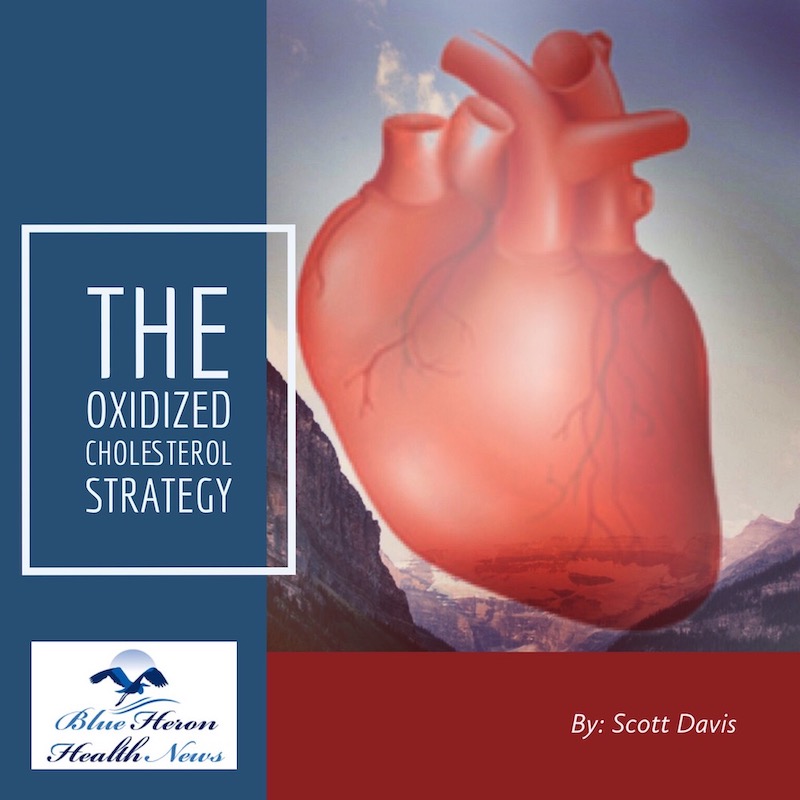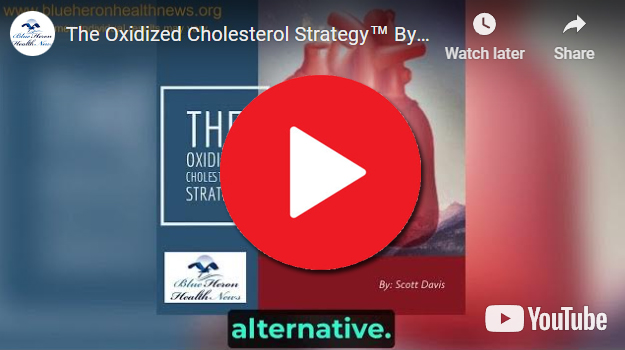
The Oxidized Cholesterol Strategy™ By Scott Davis The Oxidized Cholesterol Strategy is a well-researched program that reveals little known secret on how to tackle cholesterol plaque. This program will tell you step by step instructions on what you need to completely clean plaque buildup in your arteries so as to drop your cholesterol to healthy level.
What is the impact of oxidized cholesterol on endothelial function?
Impact of Oxidized Cholesterol on Endothelial Function
Oxidized cholesterol, particularly oxidized low-density lipoprotein (oxLDL), significantly impacts endothelial function, which is critical for maintaining vascular health. Here’s a detailed exploration of how oxLDL affects endothelial cells and contributes to cardiovascular diseases, supported by multiple sources:
1. Endothelial Dysfunction and Nitric Oxide (NO) Reduction
Nitric Oxide Bioavailability:
- OxLDL reduces the bioavailability of nitric oxide (NO), a crucial molecule produced by endothelial cells that helps maintain vascular tone by promoting vasodilation. NO also has anti-inflammatory and anti-thrombotic properties.
Mechanism:
- OxLDL induces the production of reactive oxygen species (ROS), which in turn reduce NO levels by reacting with it to form peroxynitrite, a potent oxidant. This reaction diminishes the vasodilatory capacity of the endothelium.
Sources:
- Circulation Research Oxidized LDL and Endothelial Dysfunction
- Journal of Clinical Investigation OxLDL and Nitric Oxide Reduction
2. Pro-Inflammatory Effects
Cytokine Production:
- OxLDL stimulates endothelial cells to produce pro-inflammatory cytokines such as interleukin-6 (IL-6) and tumor necrosis factor-alpha (TNF-α). These cytokines promote inflammation within the vascular wall.
Adhesion Molecule Expression:
- OxLDL increases the expression of adhesion molecules like vascular cell adhesion molecule-1 (VCAM-1) and intercellular adhesion molecule-1 (ICAM-1) on endothelial cells. This facilitates the adhesion and transmigration of leukocytes (white blood cells) into the arterial wall, further promoting inflammation.
Sources:
- American Heart Association Inflammation and Atherosclerosis
- Nature Reviews Cardiology Inflammatory Response to OxLDL
3. Oxidative Stress and Endothelial Damage
Reactive Oxygen Species (ROS) Production:
- OxLDL induces oxidative stress by generating ROS within endothelial cells. These ROS cause oxidative damage to cellular components, including lipids, proteins, and DNA, compromising endothelial cell function.
Endothelial Cell Apoptosis:
- The oxidative damage and pro-inflammatory environment created by oxLDL can trigger apoptosis (programmed cell death) in endothelial cells, leading to endothelial dysfunction and the progression of atherosclerosis.
Sources:
- Journal of the American Heart Association Oxidative Stress and Endothelial Dysfunction
- Free Radical Biology and Medicine OxLDL and Endothelial Apoptosis
4. Impairment of Endothelial Repair Mechanisms
Inhibition of Endothelial Progenitor Cells (EPCs):
- EPCs are involved in the repair and regeneration of the endothelium. OxLDL impairs the function and mobilization of EPCs, reducing the endothelium’s ability to repair itself after injury.
Sources:
- Journal of Clinical Investigation OxLDL and EPC Function
- Cardiovascular Research Endothelial Progenitor Cells and Atherosclerosis
Conclusion
Oxidized cholesterol exerts multiple detrimental effects on endothelial function, including reducing nitric oxide bioavailability, promoting inflammation, inducing oxidative stress, and impairing endothelial repair mechanisms. These effects collectively contribute to the development and progression of atherosclerosis, highlighting the importance of managing cholesterol levels and oxidative stress to maintain vascular health.
References
- Circulation Research: Oxidized LDL and Endothelial Dysfunction
- Journal of Clinical Investigation: OxLDL and Nitric Oxide Reduction
- American Heart Association: Inflammation and Atherosclerosis
- Nature Reviews Cardiology: Inflammatory Response to OxLDL
- Journal of the American Heart Association: Oxidative Stress and Endothelial Dysfunction
- Free Radical Biology and Medicine: OxLDL and Endothelial Apoptosis
- Journal of Clinical Investigation: OxLDL and EPC Function
- Cardiovascular Research: Endothelial Progenitor Cells and Atherosclerosis
How can antioxidants help prevent cholesterol oxidation?
How Antioxidants Help Prevent Cholesterol Oxidation
Antioxidants play a critical role in preventing the oxidation of cholesterol, particularly low-density lipoprotein (LDL) cholesterol, which is a key factor in the development of atherosclerosis and cardiovascular diseases. Here’s an in-depth look at how antioxidants help prevent cholesterol oxidation, supported by multiple sources:
1. Neutralization of Free Radicals
Mechanism:
- Antioxidants neutralize free radicals by donating an electron, thus preventing the free radicals from interacting with and oxidizing LDL cholesterol. This interruption in the oxidative chain reaction helps protect LDL particles from oxidative damage.
Key Antioxidants:
- Vitamins C and E, polyphenols, and carotenoids are potent antioxidants that can neutralize free radicals. Vitamin E, in particular, is lipid-soluble and can integrate into LDL particles, providing direct protection against oxidation.
Sources:
- Journal of Lipid Research Antioxidant Mechanisms
- Clinical Nutrition Antioxidants and Lipid Oxidation
2. Inhibition of Oxidative Enzymes
Enzyme Inhibition:
- Certain antioxidants inhibit enzymes involved in the production of reactive oxygen species (ROS), such as NADPH oxidase and lipoxygenase. By reducing the activity of these enzymes, antioxidants help lower the levels of ROS that can oxidize LDL cholesterol.
Sources:
- Free Radical Biology and Medicine Enzyme Inhibition by Antioxidants
- Biochimica et Biophysica Acta (BBA) – Molecular Basis of Disease Enzyme Inhibitors
3. Regeneration of Antioxidant Systems
Synergistic Effects:
- Antioxidants can regenerate other antioxidants, enhancing their collective protective effects. For example, vitamin C can regenerate oxidized vitamin E, maintaining its effectiveness in protecting LDL particles from oxidation.
Sources:
- Journal of the American College of Nutrition Synergistic Effects of Antioxidants
- Archives of Biochemistry and Biophysics Regeneration of Antioxidants
4. Reduction of Inflammation
Anti-Inflammatory Properties:
- Many antioxidants possess anti-inflammatory properties, reducing the overall inflammatory response that contributes to oxidative stress. By mitigating inflammation, antioxidants help decrease the production of ROS and subsequent oxidation of LDL cholesterol.
Sources:
- American Journal of Clinical Nutrition Anti-Inflammatory Effects of Antioxidants
- Nutrition Reviews Inflammation and Antioxidants
5. Scavenging of Reactive Oxygen Species (ROS)
Direct Scavenging:
- Antioxidants such as superoxide dismutase (SOD), catalase, and glutathione peroxidase directly scavenge ROS, preventing them from interacting with LDL cholesterol and initiating oxidation.
Sources:
- Redox Biology ROS Scavenging by Antioxidants
- Biochemical Pharmacology Role of Antioxidants in Scavenging ROS
Conclusion
Antioxidants prevent cholesterol oxidation through multiple mechanisms, including neutralizing free radicals, inhibiting oxidative enzymes, regenerating other antioxidants, reducing inflammation, and directly scavenging ROS. These actions collectively help protect LDL cholesterol from oxidation, reducing the risk of atherosclerosis and associated cardiovascular diseases. Incorporating antioxidant-rich foods and supplements into the diet can be an effective strategy for enhancing cardiovascular health.
References
- Journal of Lipid Research: Antioxidant Mechanisms
- Clinical Nutrition: Antioxidants and Lipid Oxidation
- Free Radical Biology and Medicine: Enzyme Inhibition by Antioxidants
- Biochimica et Biophysica Acta (BBA) – Molecular Basis of Disease: Enzyme Inhibitors
- Journal of the American College of Nutrition: Synergistic Effects of Antioxidants
- Archives of Biochemistry and Biophysics: Regeneration of Antioxidants
- American Journal of Clinical Nutrition: Anti-Inflammatory Effects of Antioxidants
- Nutrition Reviews: Inflammation and Antioxidants
- Redox Biology: ROS Scavenging by Antioxidants
- Biochemical Pharmacology: Role of Antioxidants in Scavenging ROS
The Oxidized Cholesterol Strategy™ By Scott Davis The Oxidized Cholesterol Strategy is a well-researched program that reveals little known secret on how to tackle cholesterol plaque. This program will tell you step by step instructions on what you need to completely clean plaque buildup in your arteries so as to drop your cholesterol to healthy level.
